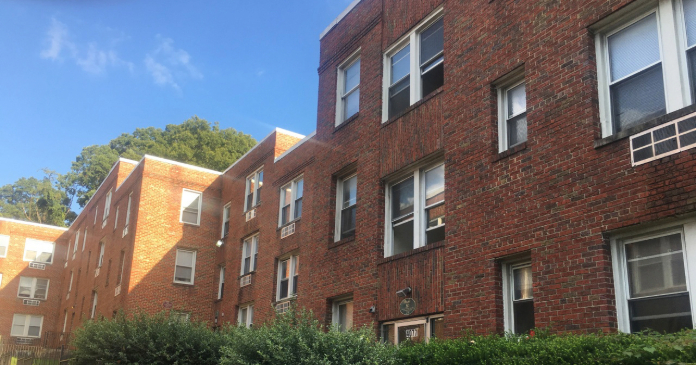The latest commercial property price report from MSCI Real Capital Analytics said that multifamily property prices fell 0.3 percent in October from their level of the month before. Prices were down 6.1 percent from their level of one year ago.
Defining CPPI
MSCI tracks an index called the Commercial Property Price Index (CPPI). The index is computed based on the resale prices of properties whose earlier sales prices and sales dates are known. The index represents the relative change in the price of property over time rather than its absolute price. Note that, as new property transactions are added to the MSCI dataset each month, they recalculate the CPPI for the months in which the transactions occurred, potentially all the way back to the beginning of the data series.
Multifamily property price decline moderates
The first chart, below, shows how the CPPI’s for all commercial property as a single asset class and for apartments have changed since January 2016. To simplify the comparison, both CPPI’s have been normalized to values of 100 in January 2012. The chart also contains trend lines showing the straight-line average rates of price appreciation for the two asset classes based on their performances from January 2012 to December 2019, a period in which commercial property price appreciation was remarkably steady.
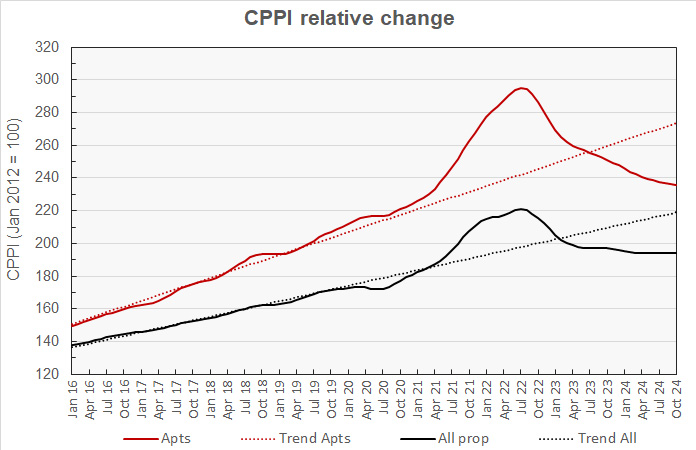
The chart shows that both multifamily property prices and general commercial property prices have been falling since August 2022, although general commercial property prices have been relatively unchanged since last May.
Multifamily property prices are now down 20.2 percent from their peak but are still 11.3 percent above their level in January 2020. They are 13.9 percent below their pre-pandemic trend line.
Prices for all commercial property as a single asset class are down 12.2 percent from their peak but are 12.3 percent above their level in January 2020. They are 11.4 percent below their pre-pandemic trend.
The next chart plots the month-over-month changes in the values of the CPPI over the last 25 months for all commercial property as a single asset class and for apartments. It also includes the same metrics based on the data included in last month’s report and the report from the month before that.
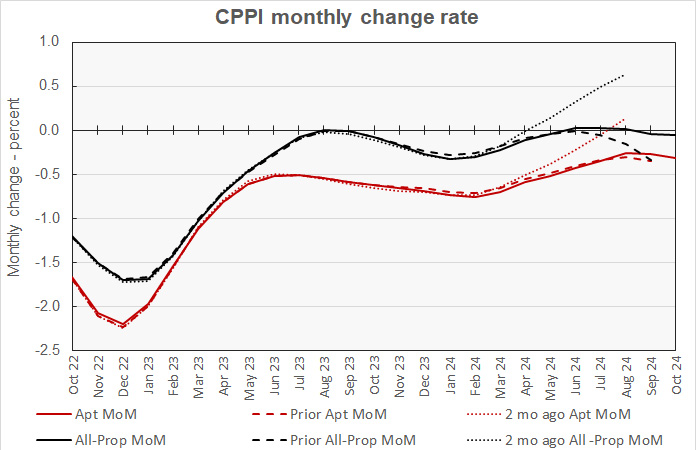
While last month’s revisions to the recent multifamily property price history were substantial, this month’s revisions are not. Unlike two months ago when it appeared that the string of monthly price declines was broken, this month’s and last month’s data show that the trend of modest and steady price declines over the last few months has continued.
The price picture for all commercial property considered as a single asset class saw greater changes based on the revised data in this month’s report. While last month’s revisions made the price change trajectory look significantly worse, this month’s revisions made it look better. However, even the revised data in this month’s report does not show sustained price growth.
Multifamily prices fall
October’s data indicate that the month-over-month decline in multifamily property prices was the largest of the property types covered. Even the price decline for offices within central business districts (CBDs) was smaller at -0.2 percent for the month.
Industrial property saw the largest monthly price gain in October with a rise of 0.6 percent. Prices for office property outside of CBD’s grew at a rate of 0.2 percent for the month. Prices for retail property fell 0.1 percent for the month.
Industrial property continued to be the best performing property type on a year-over-year basis, with prices rising 7.1 percent. Prices for offices within CBDs were down 18.7 percent while prices for suburban offices fell 1.6 percent. Prices for retail property fell 1.9 percent.
Major metro commercial property prices continue lower
The MSCI report provides data comparing the price changes of commercial property in 6 major metro* areas against those in the rest of the country, although it does not separate out apartments from other commercial property types in this comparison. The next chart, below, plots the history of the relative price indexes since January 2016 for both market segments, along with trend lines based on straight-line fits to the changes in these indexes between January 2012 and December 2019. For purposes of this chart, both price indexes were set to values of 100 for January 2012.
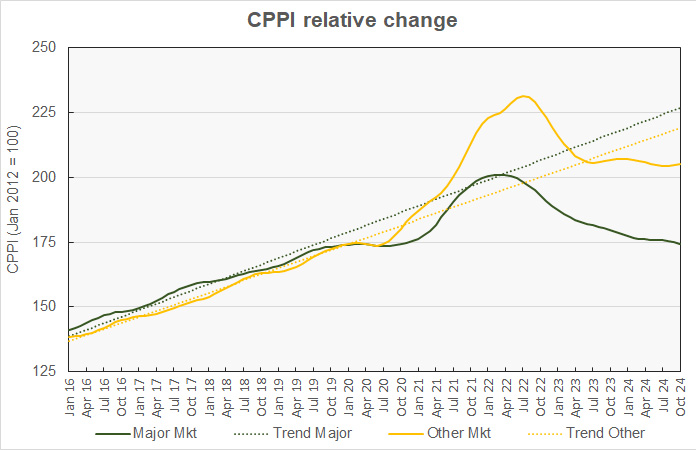
The chart shows that the CPPI for major metro commercial property is down 0.4 percent month-over-month and 2.9 percent year-over-year. It has fallen 13.2 percent from its peak and is now only 0.2 percent above its level in January 2020. It is 23.1 percent below its long-term trend.
The other markets CPPI is up 0.2 percent month-over-month but down 0.8 percent year-over-year. It has now fallen 11.4 percent from its peak but is 17.7 percent above its level in January 2020. The non-major metro CPPI is 6.4 percent below its pre-pandemic trend.
The final chart plots the history of the month-over-month changes in the price indexes for the two property markets over the last 25 months along with last month’s monthly price change data.
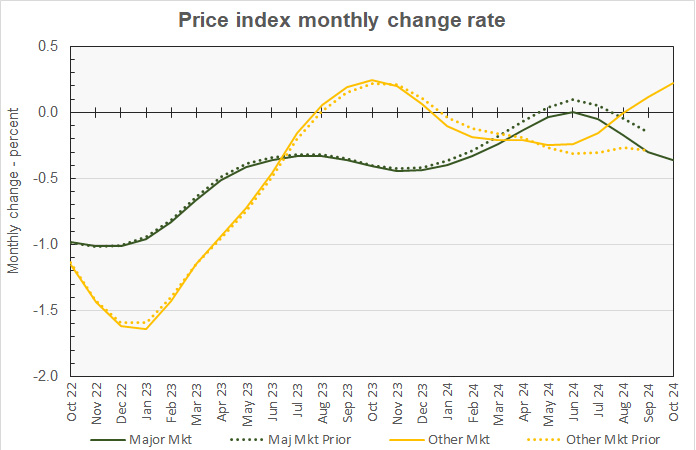
The chart shows that revisions to last month’s pricing data made major market price history look worse but made non-major market price history look significantly better. The additional transactions identified for this month’s report made noticeable changes to the calculated month-over-month price growth data for at least the last 4 months.
The full report provides more detail on other commercial property types. Access to the MSCI Real Capital Analytics report can be obtained here.
*The major metros are Boston, Chicago, Los Angeles, New York, San Francisco and Washington DC.











